XR/AR in Retail: Benefits, Use Cases & Examples in 2024
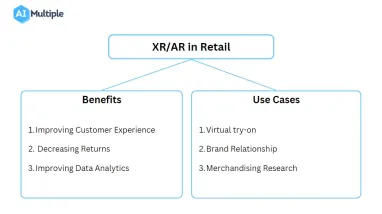
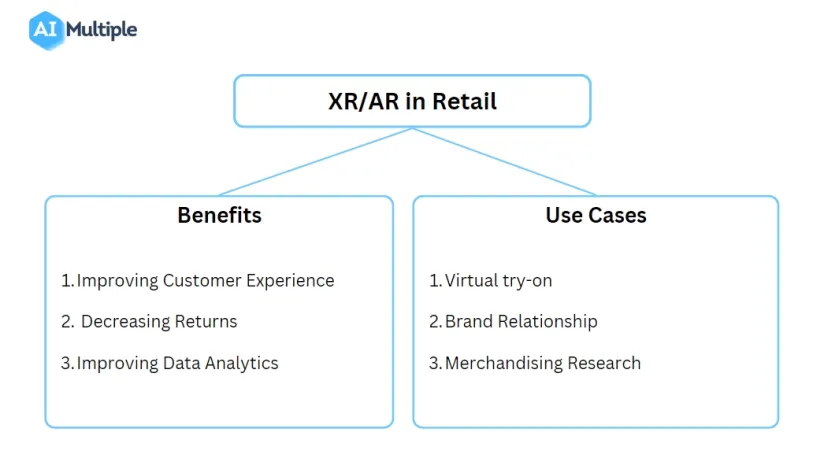
The pandemic is estimated to have accelerated the shift to digital transformation in retail by ~5 years, which is pushing retailers to design modern consumer experiences.1 Retail companies are working to improve:
- Hyper-personalization
- In-store experiences
- Brand loyalty
- Experiential retail
Extended reality (XR) technologies can help retail and e-commerce companies design experiential retail practices.
However, most business leaders are unaware of the use cases and benefits of leveraging XR in retail since it is an emerging technology. We composed this article to inform business leaders about the benefits of XR/AR in retail with use cases and examples from real life to help direct their XR investments in a profitable direction.
Top 3 benefits of XR in retail
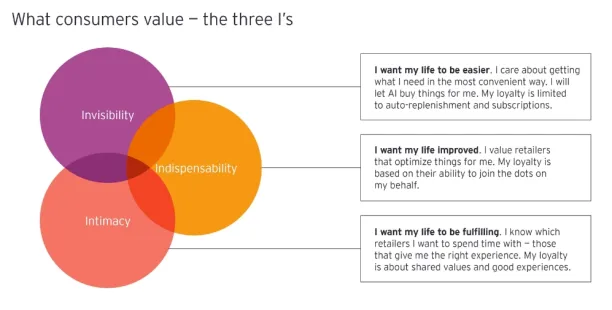
Figure 1: What consumers value, Source: EY
Consumers want brands to make life easier for them through personalized and easy experiences (see Figure 2). They also value relationships built through good experiences and shared values. Extended reality can meet what customers value through 3 benefits:
1. Improving customer experience
Pre and post-purchase assistance
XR experiences meet modern consumer expectations by immersing them in brand experiences throughout the brand-consumer relationship. Extended reality technology enables effective participation of the user, which is a pain point of the online shopping experience. Gamification and visualization achieved through XR technology aids customers in:
- Product introduction
- Product visualization
- Personalization
- Post-purchase assistance
Leveraging augmented and virtual reality in the retail sector helps brands provide an immersive experience as an increasing number of consumers expect and prefer the technology while shopping. AR firms claim that 61% of consumers prefer retailers with AR experiences, and 71% of consumers say they would shop more if they used AR.2
Building brand loyalty
XR can be used to deliver the brand’s values to consumers in engaging experiences, reinforcing consumer expectations, and making them feel more connected. According to IBM, 44% of customers choose products and brands based on how well they align with their values.3
These improvements in customer experience lead to satisfied customers and increased sales.
2. Decreasing returns
Data suggests that 20% of products bought online are returned, whereas 9% of products bought in-store are returned. For fashion, 72% of products are returned because of issues regarding the product’s size, fit, style, etc.4 These high numbers indicate that online shopping experiences can fail to deliver information accurately and effectively.
XR enables retailers to incorporate the positive aspects of brick-and-mortar stores in online sales experiences. Customers view, try, and learn about products in a digital environment which leads to well-informed purchasing decisions and fewer returns.
3. Improving data analytics
Computer vision and augmented reality open new data and data-collecting options for the retail industry. AR apps can capture data in real-time and present insights on:
- in-store traffic
- hot spots
- product interactions
- user behaviors
These insights can be utilized to design customer experiences and drive personalization further. Physical stores and digital experiences can be improved via consumer data, which will lead to more positive experiences and higher customer satisfaction.
Top 4 use cases of XR in retail with real-world examples
1. Virtual try-on
Consumers want the brand and products to be where they are, and AR technology offers convenience through mobile devices or screens. Augmented reality enables customers to investigate, personalize, and learn about the products prior to purchase, which leads to informed purchase decisions and higher satisfaction.
Delux Paint utilizes immersive technologies to help customers visualize their products while promoting engagement and interaction through social media to increase brand awareness.
Lily, a Chinese womenswear brand, installed a virtual fitting room via interactive screens at a Shanghai metro station for people to try on their products. Customers could take a selfie or use the QR code to download the image on their phones.
2. Brand relationship
AR experiences offer new content and delivery options for brands to build meaningful relationships with their customers before and after purchase. AR experiences are also proven to be superior in terms of memory encoding, engagement, attention, and emotional intensity.
AR content for engagement and marketing
Brands can offer gamified experiences to attract a target audience and increase customer engagement. Kellogg’s offers AR games for kids, which are only accessible from Coco Pops packs. Digital content also promotes sustainability which increases brand value for some consumers.
AR filters are used by brands to build brand engagement and brand awareness. Burger King developed an AR feature for its app that can be used to set rival ads on fire.
The campaign resulted in:
- + 4,000,000 ads burned
- 54.6% increased in-app sales
- significant organic coverage
AR packaging
Companies utilize AR technology with QR codes in packages or product catalogs to:
- Present additional content to increase brand engagement
- Promote cross-selling
- Inform consumers about discounts & offers
- Create shareable experiences for consumers
Customer experiences
AR manuals improve user experience by replacing paper manuals with immersive visual experiences accessible via mobile devices. AR manuals provide value for the entire lifecycle of the product by assisting:
- introduction
- installation
- troubleshooting
Hyundai utilized AR manuals to present information and instructions regarding its products.
Customer service
AR-assisted customer service is driven by the “Show, don’t tell.” principle, which is proven to:
- reduce errors in troubleshooting
- increase first-time fix rates
- improve customer satisfaction
Below is a demonstration of how AR technology simplifies customer service processes.
3. Merchandising research
Retailers often experiment with store and shelf layouts to improve their in-store experience. Using virtual reality, marketers can create a realistic 3D virtual experience that mimics a supermarket to conduct merchandising research. VR enhances research activities by:
- providing a realistic in-store experience without actually building a physical store, which saves time and money
- enabling fast idea testing and a variety of simulations (i.e., A/B tests)
- capturing customer data (eye tracking, idle time, etc.) to better understand consumer behavior and design shopping experiences
- being cost-effective compared to conventional methods
- providing VR environments that are easy to use, adapt, and re-use
VR is also beneficial in product research as it can be used to design and test product packaging with the same benefits listed above.
4. Enhancing in-store experiences
AR shopping assistants
AR tools can act as shopping assistants accessible through a smartphone camera by offering interactive experiences and information to enhance shopping experiences. Phillips utilizes AR tags to improve the in-store experiences of its customers in retail stores.
AR displays
In addition to smartphones, AR displays can also be utilized to offer hybrid shopping experiences for customers. These screens can be used to:
- try products
- offer personalization options
- increase customer engagement via interactive experiences
LEGO utilizes AR displays to showcase its products in assembled form, giving customers a better understanding of the product.
Kate Spade uses in-store displays to offer their customers an AR experience of personalization and design.
5. Virtual stores/showrooms
Many brands, including Gucci, Walmart, and GAP, have invested in Roblox, a metaverse with 60 million daily active users. While almost 40% of the active users are under the age of 13, they will be making purchasing decisions in the upcoming decade.5 As a generation that values immersive and entertaining digital experiences, brands are trying to establish a presence in the metaverse ecosystem to keep up with modern customers.
Virtual stores bring the human element into e-commerce and bridge the gap between in-store and online shopping. Virtual shopping:
- Supports omnichannel brand experience
- Tracks analytics through the customer journey
- Enables 24/7 availability for customer convenience
- Offers personalized and engaging shopping experiences
- Provides customer-centered in-store experience
Below is an example of how virtual shopping experiences promote hyper-personalization and provide customers with relevant information to enhance customer experience.
If you have any questions about XR in retail, don’t hesitate to contact us:
This article was drafted by former AIMultiple industry analyst Berke Can Agagündüz.
External Links
- 1. Papagiannis, Helen (October 7, 2020). “How AR Is Redefining Retail in the Pandemic“. Harvard Business Review. Retrieved January 11, 2023.
- 2. “20 Augmented Reality Statistics You Should Know in 2022“. Threekit. Retrieved January 11, 2023.
- 3. “Consumers want it all“. IBM. January 13, 2022. Retrieved January 11, 2023.
- 4. Dopson, Elise (August 25, 2021). “The Plague of Ecommerce Return Rates and How to Maintain Profitability“. Shopify. Retrieved January 11, 2023.
- 5. James, Dani (November 14, 2022). “How retailers are connecting the metaverse to the real world and revenue“. RetailDive. Retrieved January 11, 2023.

Cem has been the principal analyst at AIMultiple since 2017. AIMultiple informs hundreds of thousands of businesses (as per similarWeb) including 60% of Fortune 500 every month.
Cem's work has been cited by leading global publications including Business Insider, Forbes, Washington Post, global firms like Deloitte, HPE, NGOs like World Economic Forum and supranational organizations like European Commission. You can see more reputable companies and media that referenced AIMultiple.
Throughout his career, Cem served as a tech consultant, tech buyer and tech entrepreneur. He advised businesses on their enterprise software, automation, cloud, AI / ML and other technology related decisions at McKinsey & Company and Altman Solon for more than a decade. He also published a McKinsey report on digitalization.
He led technology strategy and procurement of a telco while reporting to the CEO. He has also led commercial growth of deep tech company Hypatos that reached a 7 digit annual recurring revenue and a 9 digit valuation from 0 within 2 years. Cem's work in Hypatos was covered by leading technology publications like TechCrunch and Business Insider.
Cem regularly speaks at international technology conferences. He graduated from Bogazici University as a computer engineer and holds an MBA from Columbia Business School.
To stay up-to-date on B2B tech & accelerate your enterprise:
Follow on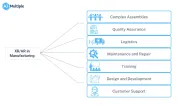
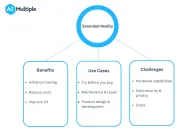
Comments
Your email address will not be published. All fields are required.